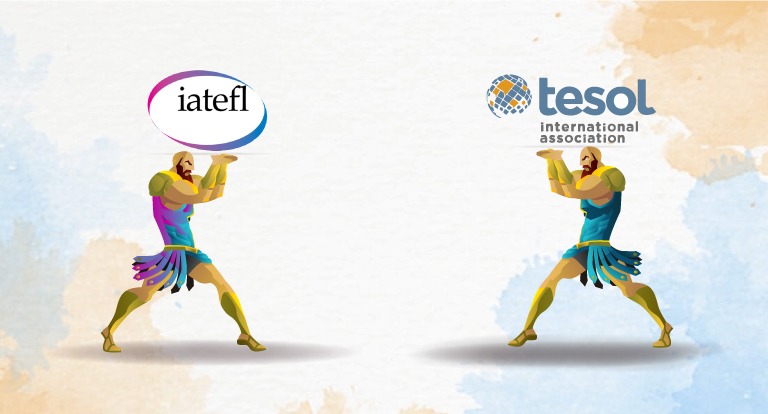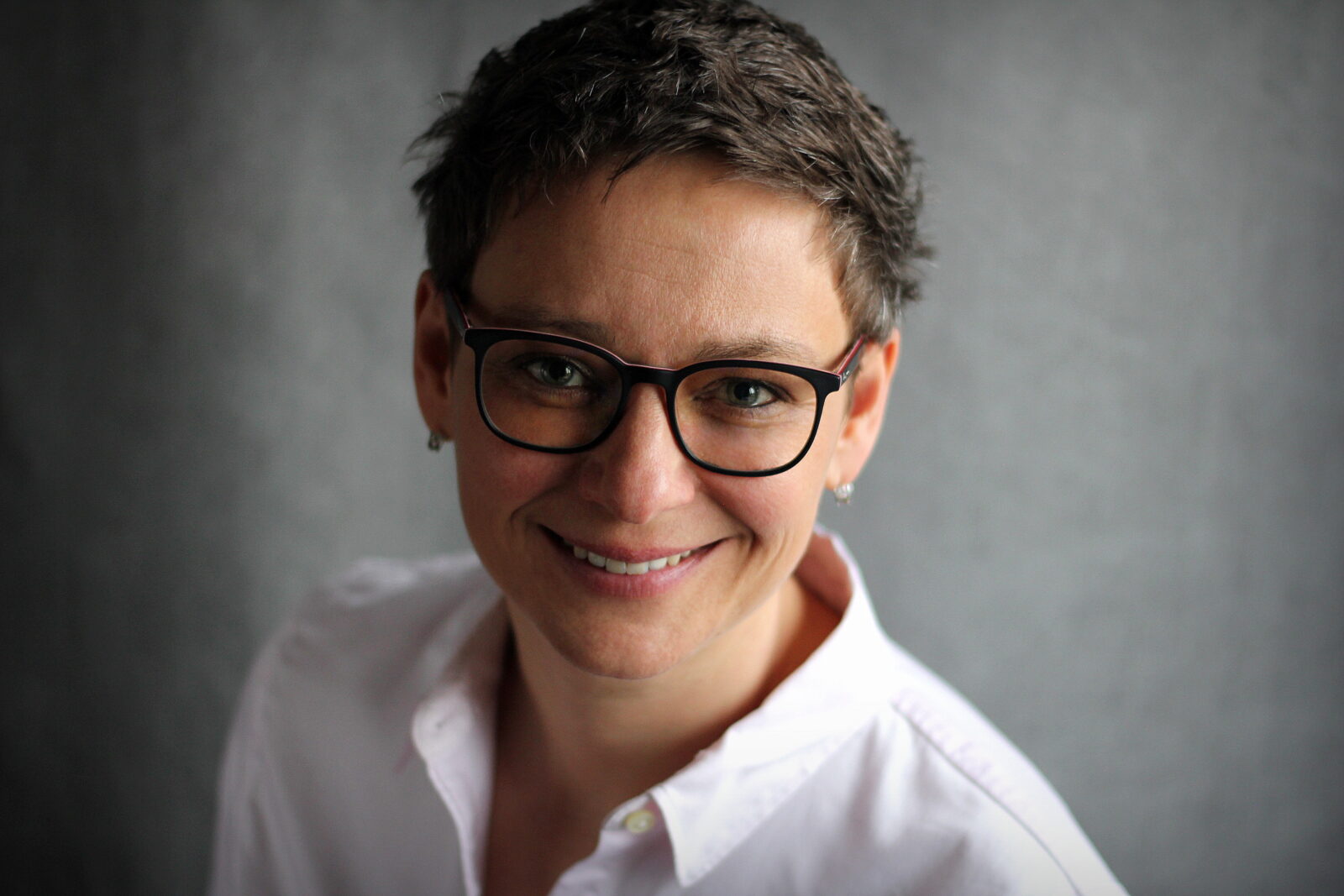For over 50 years, TESOL International Association (commonly referred to simply as TESOL) and the International Association of Teachers of English as a Foreign Language (IATEFL) have been the two most reputable and widespread associations in the English Language Teaching (ELT) field. Members of these associations, as well as past presidents and board members, led the ELT boom in the 1970s and 1980s and gained prestige as innovative sources of best practices and pedagogy in language education. However, even organizations with legendary status in their industries are not impervious to paradigm shifts over time.
While students and teachers in ELT have been scrambling in the last year to adapt to the challenges of online learning, a pandemic and worldwide economic downturn, IATEFL and TESOL have been working to find ways to support their networks, empower members and sustain their own charitable coffers. In order to better understand the work these associations carry out, it’s important to understand their institutional structures, how their affiliates operate within the greater associations and how they finance their visions into actionable missions to help shape the future for English language learning globally.
A Peek Inside the Structures
What started as grassroots educational collectives has blossomed into international English language networks, straddling both sides of the Atlantic over the last six decades. IATEFL and TESOL are the two largest international associations in ELT, and in many ways, their storied legacies are well-deserved. Past presidents, board members and thought leaders in the field have all prepared presentations, tested papers and delivered plenary speeches on the stages of their conferences for generations.
Throughout the years, both organizations have stayed true to their roots and their missions: supporting high-quality English language teaching for students through professional development for teachers around the world. Although their governing bodies and vision statements mirror one another, both IATEFL and TESOL carved out their own unique ethos and cultures as they pioneered their associations.
Susan Barduhn, past president of IATEFL and professor emerita at SIT, reflected: “[IATEFL] must have had to put the ‘international’ at the beginning of our name because the organization became very international very quickly.” Based in the U.K., IATEFL saw early success with its international outreach because of its proximity to multilingual Europe. Today, IATEFL is a truly global association, having members on six continents in over 70 countries. Gabriel Diaz Maggioli, incoming president of IATEFL says, “From my experience, IATEFL is a more global organization, so they take into consideration more of the needs and trends of English in a foreign language environment.”
Although their governing bodies and vision statements mirror one another, both IATEFL and TESOL carved out their own unique ethos and cultures as they pioneered their associations.
IATEFL has two branches of administration: the head office (HO) and the board of trustees (BoT). The BoT is an all-volunteer, decision-making body composed of two presidents, two vice presidents (VPs) and six chairs of coordinating committees. Unique to IATEFL is the four-year cycle of the BoT leadership. Once elected to the board of trustees by its members, the incoming leadership cycle spends the first year as a VP and chair of the Publications Committee (CPC). The second year is spent as the president and CPC. The penultimate year is spent as president and chair of the Conference Committee (CC); the final year is spent as past president and chair of the CC.
The head office is the administrative arm of IATEFL; the staff consists of 10 paid employees. What truly sets IATEFL apart from other language associations is its special interest groups (SIGs). There are 16 IATEFL SIGs, all focusing on and supporting unique aspects of the language learning experience. Diaz says, “SIGs are essential to the nature of our association; you get to know people on a first-name basis because of the dynamic engagement.” Each month, the IATEFL SIGs run free events for members, non-members and employers who are scouting for new ELT talent worldwide.
Across the pond, TESOL’s identity is fused with the American experience because they are based in, and their members have institutional ties to, the United States. Administratively, TESOL is also split in two; it has a governing board of directors (BoD) and an administrative office under the executive director (ED). The BoD is composed of 11 volunteer members who each serve a three-year term.
TESOL President Gabriela Kleckova reflects on her reason for joining the BoD: “TESOL is my professional home; it’s where I grew up in the field. All the people I was mentored by, in my career, were either former or future TESOL presidents, so I like to say it’s in my teaching DNA.” Kleckova describes her role as president as more of a team captain than head-of-state.
“Being the president, I’m not a ‘power person’. It is a leadership role, but it’s really being one of 11 decision-makers in a group of very thoughtful, elected, experienced TESOL professionals working as one. I’m the face of TESOL, I represent TESOL to the public, but when we make decisions, it’s as a board, not just the president,” she explained.
As president, Kleckova also had to rid her record of any potential conflicts of interest. She says, “We sign forms to protect conflicts of interest. It’s a very strict standard to prevent impropriety. I published a book [on] TESOL before my presidency, but I can’t collect royalties while I hold the position. We, the BoD, can’t review proposals. Even perceived conflicts of interest would be an issue.”
As a complement to the BoD, the ED office runs the day-to-day managerial tasks of TESOL. Rosa Aronson, a former ED and current interim ED of TESOL, says of her role, “Like a CEO, I’m a paid member of a staff of 15 people. I lead the staff into implementing the strategic objects set by the BoD. The BoD sets the direction, and I collaborate with the staff to make those objectives actionable.”
The ED is also a non-voting member of the BoD. TESOL is structured in such a way that it’s part of its strategic plan to take on advocacy causes. Says Aronson, “So far, our advocacy efforts have focused on U.S. policy because TESOL is based in the USA. We focus on issues around immigration status, anything that had to do with ELLs (English language learners) in the classroom and funding for their education, which was very limited.”
They also use their location in Arlington, Virginia, just outside of Washington, D.C., to combat laws and executive orders they felt were unjust, such as the Trump administration’s Executive Order 13769, which forbade students from Muslim-majority countries from entering the USA to study. TESOL holds an Advocacy & Policy Summit each year in order to train ELT professionals how to better advocate for their learners and themselves as professionals in their communities.
Both IATEFL and TESOL’s current missions and goals go beyond SIGs and advocacy. For IATEFL, Diaz believes, “We need steady impact supporting people who are involved in educational policy, particularly regarding languages. We want to be the catalyst for that information to lead to uplifting concepts and practices that work in smaller communities that are scalable and transferable.”
Diaz also realizes the need for a confluence of wills to change policy. “Without policy, we are just solving problems of practice. We are not solving the problems necessary to create widespread systemic change. We are not changing the DNA of the profession,” he explains.
In preparation for the post-pandemic shifts in education, TESOL is working to advance its global presence and outreach. According to Kleckova, “The world out there online offers so many opportunities to connect. Our challenge, as an association, is how can we continue to connect more people together and engage professionals in how we generate knowledge and build expertise in our field?” One of the ways TESOL is expanding is by reaching out to graduate students and teaching professional programs about what’s going on in their careers. New teachers offer fresh perspectives on ELT, and supporting those teachers keeps the ELT field evolving. Kleckova adds, “We need to upgrade [our online presence] while also serving the community. To do that, we have to transform our thinking.”
Funding Their Missions
In order to make their strategic goals into classroom realities, IATEFL and TESOL need funding to support education, professional development, training and conferences for their members. IATEFL and TESOL are friendly competitors. Both operate, essentially, as self-funding charities with broad global networks. A main source of revenue for both associations is membership fees. Their fees are comparable, as is what one receives for membership (see chart): access to online content, academic journals, discounted rates for events, and the big selling point – networking opportunities for employment, advice, resources and collegial community on an international scale. Both organizations offer discounted individual rates for early career teachers, students and low-income professionals. They also offer group memberships that cater to faculties and learning institutions.
What they also recognize is that many of their members cross-pollinate and are actively affiliated with both associations. So it is not surprising that their revenue comes from the same pools as well. For both associations, their annual in-person conferences are massive fundraisers and their largest sources of income — and greatest sources of pride. The conferences usually have themes to center the zeitgeist of the proposals, papers and presentations given by experts in the field. This year, the IATEFL and TESOL virtual conventions did not have themes; instead, the focus seemed to be global engagement, encouraging networking and virtual participation that would match the energy and enthusiasm of previous in-person annual conventions.
Revenue & Funding |
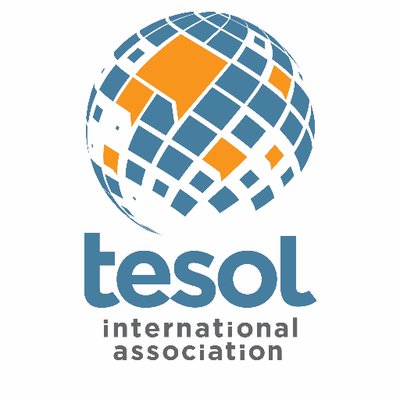 |
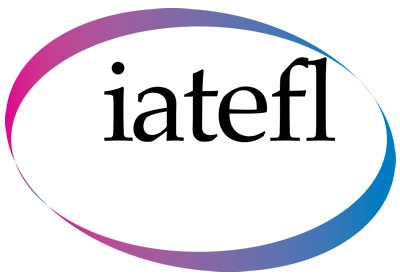 |
|---|---|---|
| Business status for tax purposes | Self-funding 501(c)(3) | Registered charity with U.K. Charities Commission |
| Number of participants and location of annual conference (2019) | ~6,500 Atlanta | ~3,000 Liverpool |
| Number of sessions in annual conference (2019) | ~1,000 | ~600 |
| Number of participants at virtual conference (2021) | ~9,000 from 100+ countries | Canceled |
| Main source of revenue | Annual international convention | Annual international conference |
That sense of deep professional connection and sharing knowledge is what kept Mary Romney, a past member of the TESOL BoD, attending conferences for decades. Romney says, “Second to only my work in the classroom with my students, my greatest professional gratification has come from TESOL. The annual TESOL Convention was my professional family reunion.” With attendance in the thousands and registration fees starting at over $100, it’s safe to infer these massive conventions pull at the purse strings as well as the heartstrings. Beyond registration fees, marketing and advertising from ELT industry exhibitions, ticketed events, publishing sales and merchandise all generate money during the conference, which as charities, goes directly back into serving their members and missions.
However, that dependable well of annual conference revenue dried up over the last year, largely because of the COVID-19 pandemic. These conferences take years of planning, hundreds of manpower hours and significant financial investments for upfront event planning costs. In early March of 2020, when the international lockdowns began in North America and Europe, the first of the international conferences of the year, the TESOL Convention in Denver, was just a few weeks away. Venues, flights and hotels were booked; programs, badges and souvenir stationery were printed. However, safety came first, and TESOL was forced to cancel the convention and issue refunds. As the coronavirus continued to spread, IATEFL followed suit, shuttering their July conference.
“Second to only my work in the classroom with my students, my greatest professional gratification has come from TESOL. The annual TESOL Convention was my professional family reunion.”
The financial toll was devastating for both. Given that neither association receives government funding or corporate sponsorships, losing such a significant percentage (almost half) of their yearly budget rocked their foundations. Rosa Aronson, the interim executive director for TESOL, said, “Last year, there was a real concern from the executive office and BoD that [TESOL] might not be around because of funding.”
Money generated from conferences keeps the lights on for both associations. It pays for their home office staff, maintenance operations of the organizations and all the administrative work that goes into content creation and management. Ultimately, it affected their outreach and their missions to support teachers, especially in a time of crisis. Suddenly, millions of teachers, students and parents were thrown into emergency remote education. For many teachers, this was their first sustained engagement with virtual classrooms; members sought out the associations for resources, materials and collegial advice. Like their teachers, IATEFL and TESOL had to improvise, shift and adjust. Aronson reports, “For years, we have been saying that we have to diversify our revenue streams, but the pandemic pushed this into the forefront of our priorities.”
TESOL pivoted to a virtual convention in July 2020; IATEFL hosted a “Global Get-Together” in lieu of their face-to-face conference in April 2020. Throughout the rest of 2020 and into 2021, there was a steady decline in memberships for both associations. Diaz, incoming president of IATEFL remarked, “The pandemic hit educators hard. Teachers have lost their jobs or lost funding from their institution to attend conferences for professional development.”
The silver lining in their foray into online conferences was the dramatic increase in global participation. Aronson noted, “We were able to reach people who would have never been able to travel to the convention, but [who were] able to afford a virtual convention.” Indeed, thousands more participants are expected to attend the virtual conferences this year than previous in-person annual gatherings. TESOL also partnered with the U.S. State Department, which sponsored global teachers to attend the convention in late March 2021. IATEFL received a government subsidy, approved during the pandemic by the U.K. Charities Commission, and also created the IATEFL Corona Hub Facebook group to give language teachers an online space to share, compare and vent frustrations.
The silver lining in their foray into online conferences was the dramatic increase in global participation.
This year, both the IATEFL Conference and TESOL Convention went completely virtual. Aronson says, “TESOL was pushed into virtual, and member attendance was much higher than projected. Starting next year, we will do a hybrid. [We want] to go back to doing conventions face-to-face, but the pandemic has now proven that there’s a whole host of global teachers who will benefit from the content remotely.” IATEFL will also continue with a hybrid conference in June 2021, but according to Diaz, the focus will be on conjuring the magical energy of an in-person gathering. “We are looking for platforms that can accommodate the audience asking questions, hosting multiple stations at one time and affording a participant at-a-distance almost the same experience as being there in-person,” he says.
For both associations, aiming to deliver a satisfyingly connective conference experience, whether in-person or virtual, is a new post-pandemic vision for the future.
Thinking Globally, Acting Locally: Affiliations and Associations
Outside of institutional memberships, there is another way for international ELT programs and groups to partner with TESOL and IATEFL. The organizations offer partnerships with the central international organization. For IATEFL, most of these professional organizations, called associates, are ELT institutions at a country-wide level. For TESOL, professional organizations, called affiliates, operate at both the national level globally and state level within the USA. To become an IATEFL associate, an institution must have two full members of IATEFL complete an associate agreement application, complete a questionnaire to determine eligibility and apply to the membership office. If the associate agreement is accepted, it’s renewable every three years. Associate institutions get bimonthly newsletters, discounted rates on memberships, associate representation on the BoT and free annual conference attendance for one member from the associate organization.
Affiliations & Associations |
 |
 |
|---|---|---|
| Title of subsidiary groups | TESOL Affiliations | IATEFL Associations |
| Number of subsidiary partnerships worldwide | 120 | 102 |
| Partners must have a democratically elected board | No | Yes |
| Partners receive funding from HQ | No | No |
| Partners pay fee to be a subsidiary partner | Yes | No |
| Partners must apply for recognized affiliate status | Yes | Yes |
The TESOL affiliate network has a parallel structure. Kleckova, president of TESOL, says of the affiliate network, “Affiliates are independent entities. It’s not that [TESOL is] the mother and they are the children. They adhere to our affiliate agreement and collaborate with our affiliates in a shared vision to meet our strategic goals. We can learn from our affiliates about advocacy issues in their contexts and use the expertise that we have to support affiliates to address those issues.” Instead, Aronson adds, “TESOL professional organizations gain affiliate status by applying to the network, signing an affiliate agreement, paying an annual affiliation fee (based on membership size), and creating a liaison position for communication with the TESOL executive office.”
These parallel organizations help to inform the global associations. They have on-the-ground experiences that they can share about what is happening with ELT in their regions, how their teachers and students are managing changes in education and what specific challenges and obstacles learners and educators face in their own divergent contexts. Diaz says, “[IATEFL] has so much information available from the associations that we would like to have a more widespread reach.” Kleckova says of the relationship between TESOL and its affiliates, “There is a sharing of expertise, networking, knowledge-sharing and partnering with affiliates to organize regional events.” Some ELT associations, such as TESOL France, partnered as both an IATEFL associate and TESOL affiliate organization.
A Tale of Two TEFLs: Slovenia and Colombia
Not all ELT professional organizations are created equal. For Sandra Vida, past president of IATEFL Slovenia, 2020 was a year of reckoning for her associate organization. IATEFL Slovenia has suffered from chronic underfunding since the 2008 financial crisis, which caused country-wide budget cuts in Slovenia that are still lingering today. The association serves about 350 members throughout Slovenia, and the basic membership fee to join is €40 per year. Even with membership dues and conference revenue, finding funds is a constant worry looming over the national association. What’s more, the staff is composed of volunteers, and most do not get time off to participate in IATEFL Slovenia; it’s completely run by dedicated ELT enthusiasts.
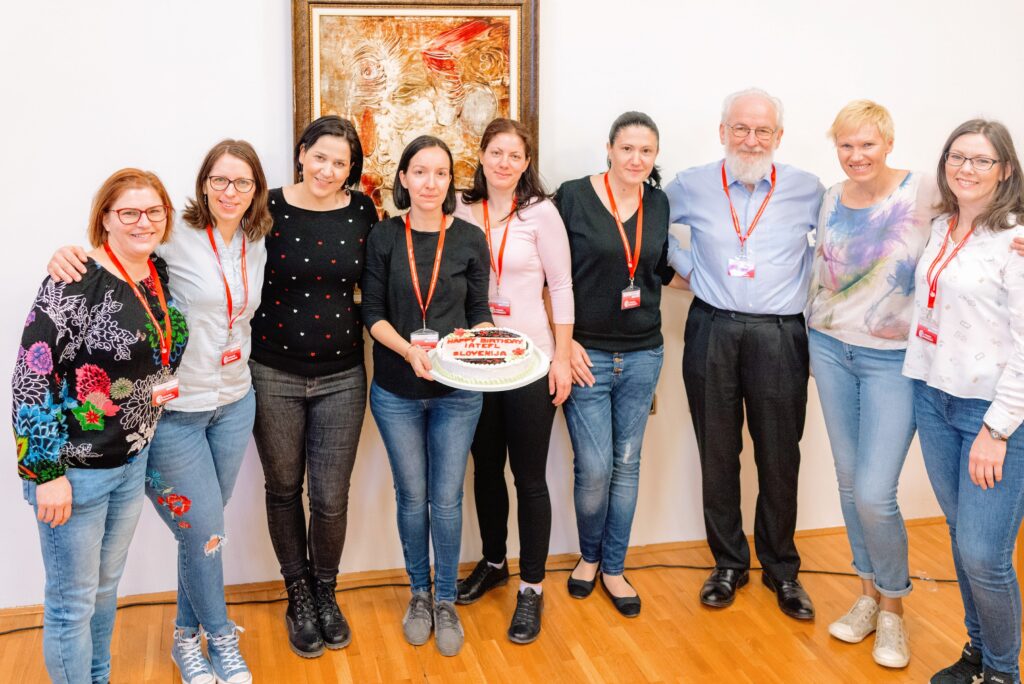
IATEFL Slovenia members at a 2018 conference
IATEFL Slovenia used to get financial support for regular advertisements in its newsletters and from British Council, but that financial cushion has dried up. Vida remarks, “There’s no system for continuing education or professional development in Slovenian public schools. It depends on school directors if teachers are given a more flexible schedule to volunteer to run [IATEFL Slovenia]. It’s up to the discretion of the headmasters. Some teachers cannot even get time off of work to attend the annual conference. Our capacity and services depend on how many ELTs are willing to donate time.”
“There’s no system for continuing education or professional development in Slovenian public schools. It depends on school directors if teachers are given a more flexible schedule to volunteer to run [IATEFL Slovenia].”
As an innovative way to raise funds, IATEFL Slovenia organizes English competition tests for third and eighth graders. About 300 regional schools pay to enter the competition at €30 per school. This competition provided a reliable secondary revenue flow, but now, the competition is in peril of its own success. Vida explains, “Some clever minds want to create a law that only one provider can administer these English language competitions. But, the Slovenia[n] Education Council wants to create a similar language competition for ninth graders. So, if they get their competition, we will not be able to have ours. That will end the main consistent source of IATEFL Slovenia funding.”
Vida has applied for grants from IATEFL, but her applications are usually dismissed because Slovenia, as a country, does not meet the minimum IATEFL rating on the Human Development Index to qualify to receive grant funding. What started as an English resource association has now turned into a business that Vida and her cohorts are trying to keep afloat amidst the pandemic. Vida half-jokingly quips, “We wouldn’t be teachers if we were business-oriented.”
On the other hand, Ivonne Gonzalez, president of TESOL Colombia, sees her role much differently. Gonzalez spent years working in the business and marketing sector before she made an accidental career pivot into ELT. Gonzalez founded TESOL Colombia in 2013 when she started as the general director of the International Center of Foreign Languages & Cultures at Universidad de La Sabana (ULS). In 2013, the Ministry of Education (MoE) created a national bilingualism goal to raise the English language level in the country. Gonzalez says, “Everyone needs communication skills. To have representation in international affairs, to participate in global markets, you need English. It’s a reality, and it’s a must.”
Colombia has invested a lot of money in teacher training and English education for children. Says Gonzalez, “It is something that will impact the country as a whole, and ULS is supporting and helping in this goal.” Gonzalez’s idea was to make ULS the epicenter of English language teaching and training in Colombia. The deal she struck was to have ULS fund the TESOL affiliate, and in exchange, ULS would get international recognition as being the annual host of the TESOL Colombia conference and get academic clout for its pioneering work as a leading ELT university in Latin America. Gonzalez says, “TESOL approved [our application] because there is nothing in the affiliate policies or regulations that says you cannot build an affiliated TESOL organization through a university.”
Aside from financial support, ULS provides TESOL Colombia with five staff members from the Center of Foreign Languages to work part-time on TESOL projects. Having a TESOL affiliate based at ULS highlights the university’s commitment to the national bilingualism mission and makes ULS a de facto leader in ELT in Colombia. Because the university funds the affiliate, memberships to TESOL Colombia are free. “Really, anyone from anywhere can join. Maybe in the future, we will have to charge, but for now, our focus is engagement and participation, so it’s free. Right now, we have about 1,000 members registered,” explains Gonzalez.
Because Gonzalez and her team do not waste time worrying about fundraising, they can attack more aspirational goals. Also, because TESOL does not stipulate that the affiliate’s BoD or president has to be democratically elected, Gonzalez can stay on as president as long as she’s the director. “The way the role was designed, the TESOL Colombia president is correlated to the director of the Center for Foreign Languages. Whoever is the director is also the president,” she says.
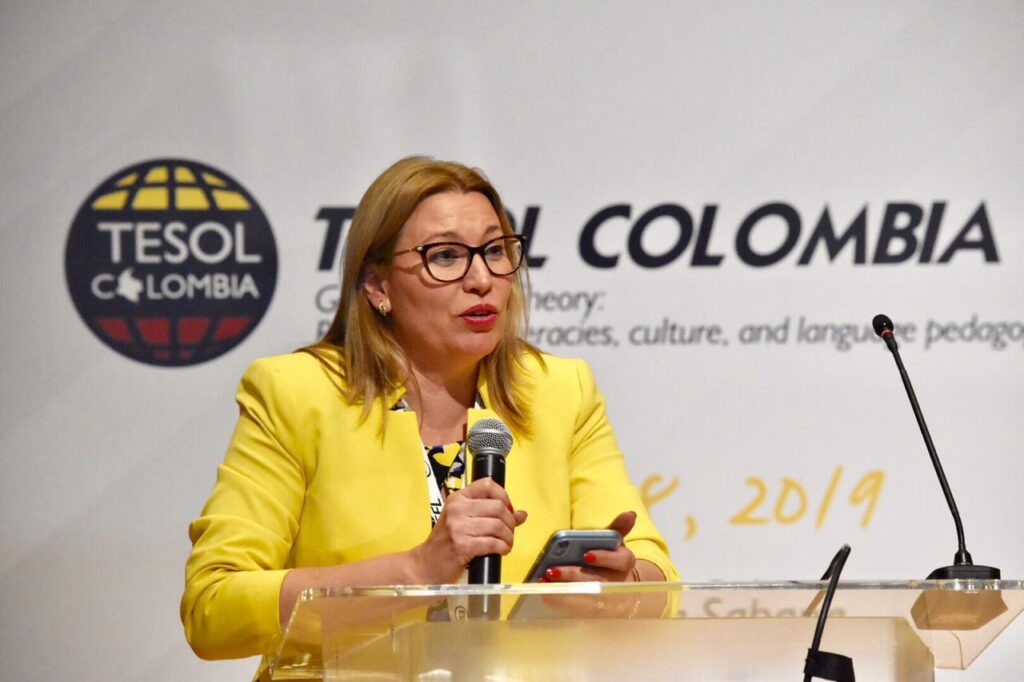
Ivonne Gonzalez speaking at TESOL Colombia in 2019
Having consistency in that leadership role allows TESOL Colombia to make long-term plans under a single leadership vision. “When you have the future view of long-term projects, it’s easier to follow them through to completion because you will be there. I’m not passing it to a person who may or may not want to take on my plans,” she adds.
“We want to make a more robust English language community here in Latin America. The best way to do that is to empower teachers and give them the tools to be excellent. The results are in the educational outcomes.”
When they’re not planning conferences, Gonzalez and her staff at ULS work on teacher training programs for their TESOL community. She says, “We want to make a more robust English language community here in Latin America. The best way to do that is to empower teachers and give them the tools to be excellent. The results are in the educational outcomes. For our MoE, bilingualism is the goal.” As Gonzalez blazes a trail for future TESOL affiliation founders, she continues to aim high, looking forward to projects on advocacy and community-building.
“I love knowledge communities. I am convinced that in education, the best way to work is through collaboration, by gathering people to share ideas and insights and learn from each other,” she states.
Challenging Times Ahead for the Titans?
IATEFL Slovenia and TESOL Colombia represent two experiences of being parallel, albeit polarized, organizations under the two titan organizations of ELT. There are hundreds of other affiliated regional and country-based associations around the world, all with varied experiences; however, these two associations exemplify what is currently working and what is hindering global English language teaching expansion and progress. In order to meet their visions and succeed, IATEFL, TESOL and their affiliates and associate organizations need to become more creative about how they will generate funding, organize and network globally and sustain their members.
In part two of this “Titans of ELT” article, BridgeUniverse will take another look at the inner working of IATEFL and TESOL, this time reflecting on how the ELT leaders have reacted to calls for diversity, equity and inclusion in the wake of the global Black Lives Matter movement and how they are advocating for greater recognition of non-native English-speaking teachers and students.






